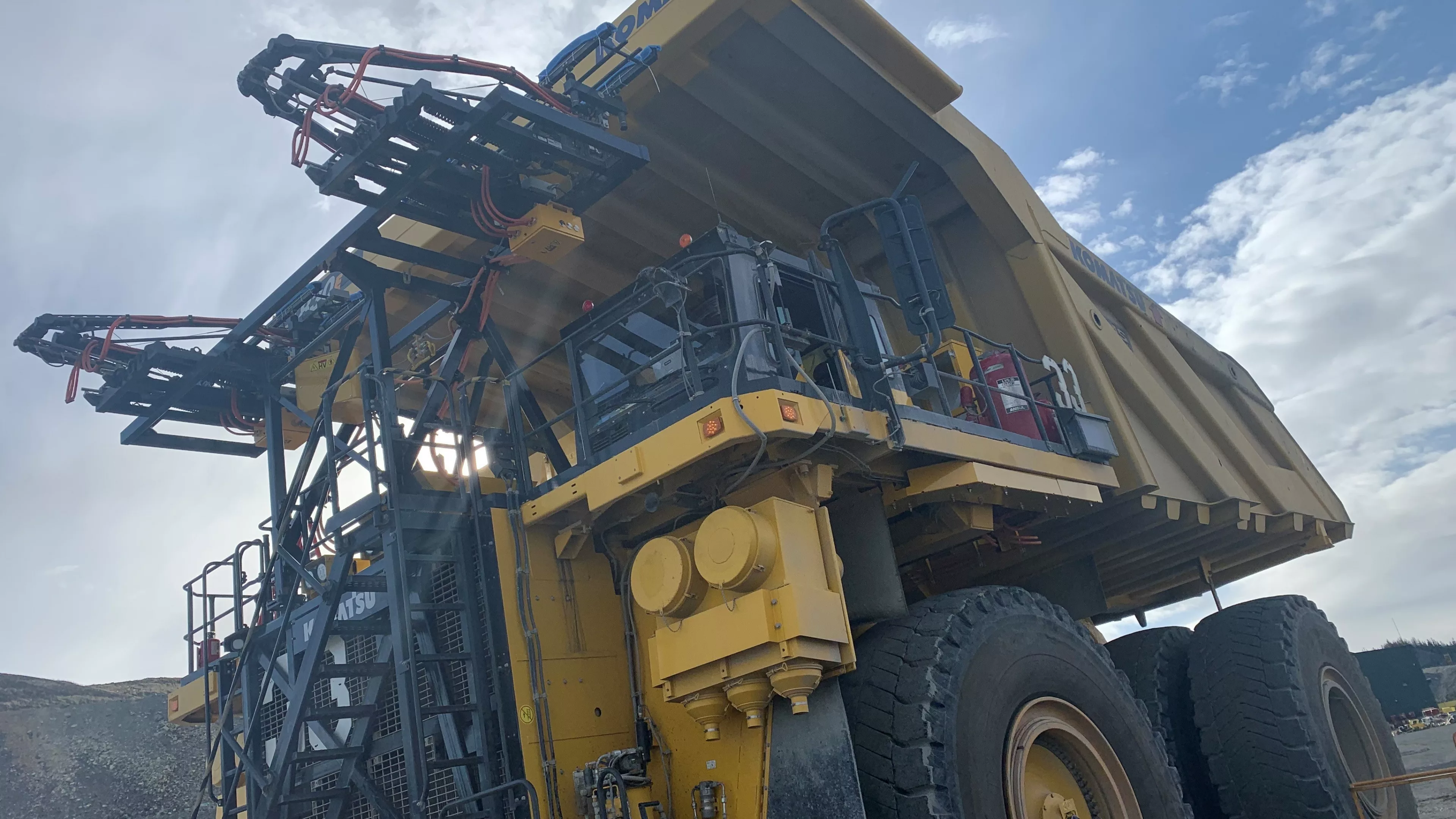Case Study
Copper Mountain’s Electric Trolley Project a Key Step Towards Net-Zero Emissions

Canada’s mining industry is working hard to produce the mined materials necessary for low-carbon technologies while innovating to reduce its own carbon footprint. Copper Mountain is leading the way in these efforts through a partnership with SMS Equipment, Komatsu, ABB, Clean BC, and B.C. Hydro.
Together, they have created a mine-site version of the overhead cables that power urban buses and trams. Instead of public transit, the trolley-assist installation at the Copper Mountain Mine will deploy haul trucks connected to a 1km overhead electric cable to transport ore uphill from the main pit of the mine to the primary crusher.
Moving heavy ore up a steep incline is a highly energy intensive process and when using diesel haul trucks, is the largest source of greenhouse gas (GHG) emissions at Copper Mountain. Each of the 11 trolley-capable haul trucks will displace approximately 400 litres of diesel and 1 tonne of carbon dioxide each hour. The new technology is anticipated to reduce the mine’s carbon emissions by at least 30% when introduced over the next five years. Copper Mountain then plans to connect additional trolley sections to support ore transport from the New Ingerbelle pit to the primary crusher for an additional 10 or more years of use, reducing the mine’s carbon intensity by over 50% in the next five to seven years.
Made possible through multiple partnerships, the electric trolley assist project represents a significant commitment by Copper Mountain to a cleaner future and is a major contributor to achieving the company’s goal of achieving net zero carbon emissions by 2035.
Representatives of the Mining Association of Canada’s Community of Interest Advisory Panel were impressed by Copper Mountain’s willingness to make a significant investment in a new and innovative approach to reducing an important source of GHG emissions at the mine site. This project has the potential to serve as an initial case study to spur broader uptake of the electric trolley-assist technology within the industry.